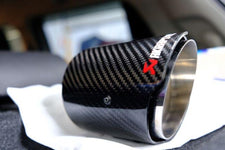When it comes to automotive construction, the debate between carbon fiber and traditional materials like steel and aluminum is more relevant than ever. As manufacturers seek ways to enhance performance, reduce weight, and improve fuel efficiency, understanding the benefits and drawbacks of each material is crucial for car enthusiasts and industry professionals alike.
What is Carbon Fiber?
Carbon fiber is a composite material consisting of thin strands of carbon atoms woven together, creating a lightweight yet exceptionally strong substance. This material has gained popularity in high-performance sports cars and luxury vehicles due to its ability to provide significant weight savings and increased rigidity.
Benefits of Carbon Fiber:
1. Weight Reduction: Carbon fiber is much lighter than traditional materials, which can lead to better handling and improved fuel efficiency. A lighter vehicle requires less energy for acceleration and deceleration, making carbon fiber a desirable choice for performance vehicles.
2. Strength and Durability: Despite its lightweight nature, carbon fiber boasts impressive tensile strength. This means that components made from carbon fiber can withstand greater stress and impact without bending or breaking.
3. Corrosion Resistance: Unlike metals, carbon fiber does not corrode, which contributes to the longevity of automotive parts and reduces maintenance costs over time.
Drawbacks of Carbon Fiber:
1. Cost: One of the primary drawbacks of using carbon fiber in automotive applications is its high cost. The manufacturing process is complex and expensive, making carbon fiber components significantly pricier than their traditional counterparts.
2. Repair Difficulties: Although carbon fiber is incredibly strong, it can be more challenging to repair than traditional materials. In the event of damage, a broken carbon fiber part may need to be replaced entirely rather than repaired.
Traditional Materials:
Steel and aluminum have been the go-to materials for automotive construction for decades. While they may not offer the same weight savings as carbon fiber, they do provide their own set of advantages.
1. Affordability: Traditional materials are generally more cost-effective than carbon fiber, making them accessible for a wide range of vehicles.
2. Ease of Repair: Steel and aluminum components are typically easier and less expensive to repair, which can be a significant factor for many car owners.
3. Proven Performance: Both steel and aluminum have decades of testing and development behind them, ensuring reliability and performance in a variety of conditions.
Conclusion: Which is Best for Your Car?
Ultimately, the decision between carbon fiber and traditional materials depends on your specific needs and priorities. If you're looking for weight savings and superior performance, carbon fiber could be the best choice. However, if you prioritize cost-efficiency and ease of repair, traditional materials may suit your needs better.
As the automotive industry continues to evolve, understanding the characteristics and advantages of materials like carbon fiber is essential for making informed decisions about your vehicle. Whether you're a performance enthusiast or a daily driver, weighing the benefits of carbon fiber against traditional materials will help you choose the best option for your car.







